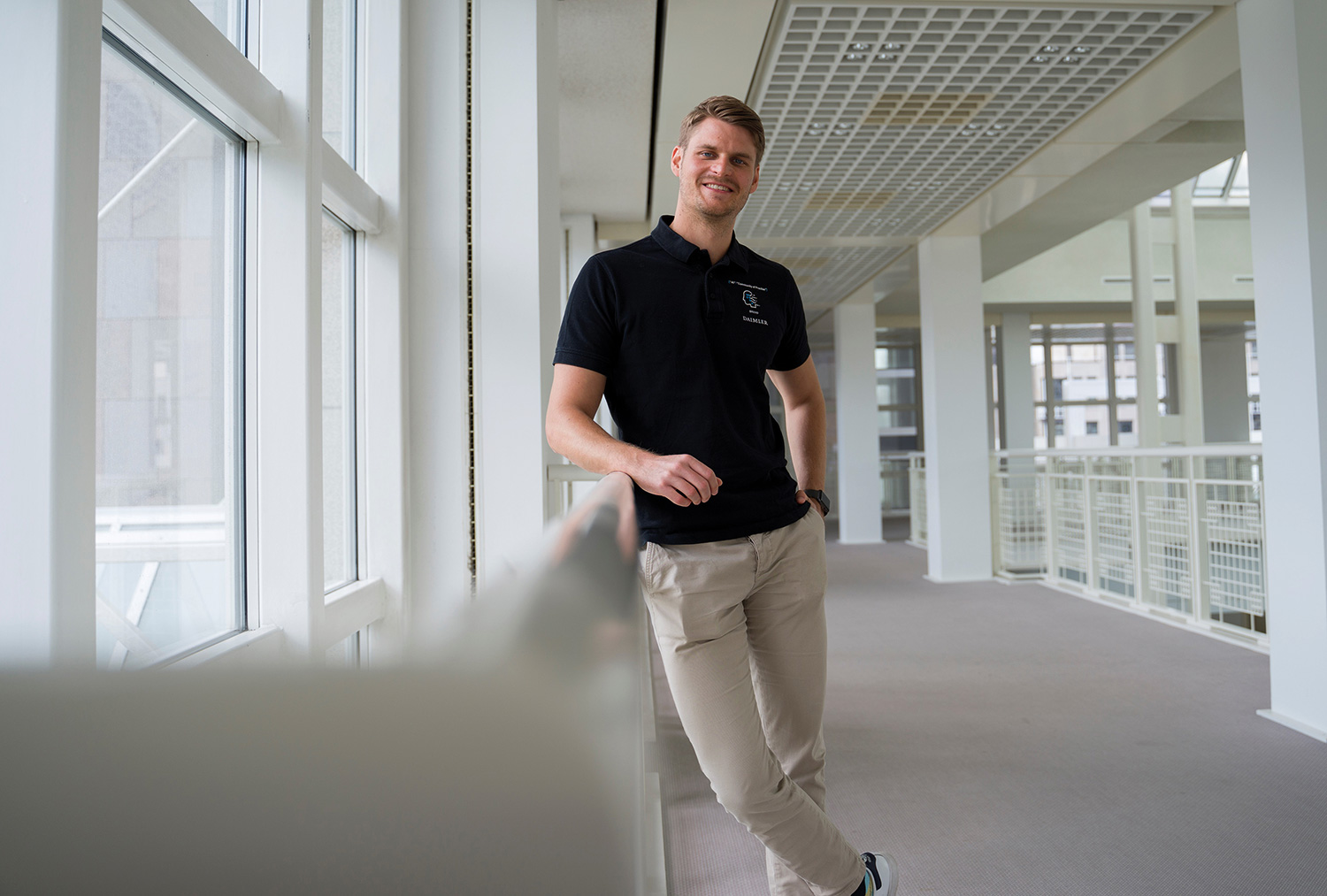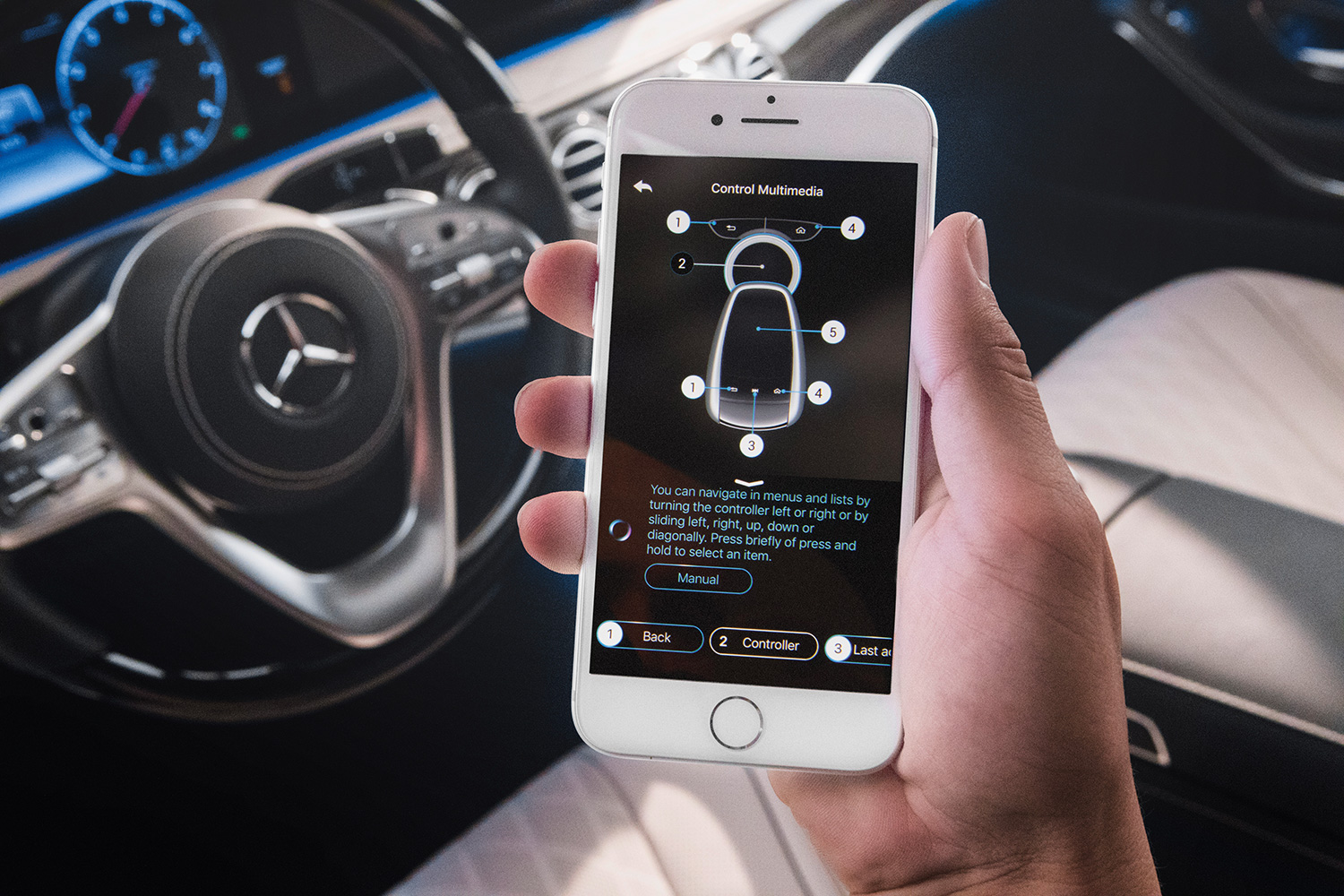
Artificial intelligence and machine learning are emerging as frontrunner digital tools in the future transformation of work.
The power to process data, overcome obstacles and access solutions with a speed and efficiency that eclipse that of the human brain, AI tools are also distinguished by a capacity to learn and grow organically, integrating new systems and functions as they evolve. All of which sounds great, but what does it work in practice?
Leveraging AI – and helping demystify it in the process – is the role of Patrick Klingler, IT Innovation Manager at iconic automobile maker and CEMS partner, Daimler.
Klingler has designed a range of AI-enabled prototypes for the Stuttgart headquartered automotive behemoth. One of his designs was the prototype for Ask Mercedes, a virtual voice assistant (similar to Siri and others for smartphones) which answers questions about the vehicle and its functions.

“Ask Mercedes is a combination of a chatbot and Augmented Reality. The platform can grow generically, which means that further functions or vehicle models and further chatbots can be seamlessly integrated,” he says. “We presented the prototype to senior management and it rapidly became a product that Daimler customers use with our vehicles. The team behind it works continually to develop and update the product to ensure that Ask Mercedes gives optimal service day after day.”
AI is changing the game at companies like Daimler, accelerating innovation, enhancing user experience, overcoming production challenges and driving productivity gains with unprecedented speed. But not everyone is a digital native like Patrick Klingler. And the concept of Artificial Intelligence in the business context can be hard to understand for the less tech-savvy.
To address this, Klingler has founded an in-house AI Community at Daimler with the goal of connecting people and driving understanding and uptake of AI across the company.
“I founded the AI Community on the Daimler Intranet a year ago. Experts and all interested parties in the company can swap ideas here to gain a stronger understanding of the essentials, spot the potential and further advance AI at Daimler. The Community now has grown to over 2,500 members in the last 12 months alone.”
Klingler’s mission going forward is the democratisation of AI within the organisation.
Democratising and demystifying AI
“Basically, democratising AI means scaling it. It means raising awareness of AI throughout the company, and also creating an infrastructure and a culture so that AI can gradually establish itself as a central instrument,” says Klingler.
Beyond the AI Community, Klingler and others are involved in what the company calls reverse mentoring.
“This is a core function of our panorganisational efforts to embrace digitalisation and accelerate towards the new world of work. I work with top managers who are grappling with AI issues. This involves highlighting opportunities on the one hand and demystifying the issue on the other.”

Demystifying Artificial Intelligence is key, he stresses, in setting realistic expectations about the technology can – and cannot – do.
“It’s very important to convey a realistic appraisal of AI potential to prevent uncertainties or even exaggerated expectations. So my work with senior executives is all about demonstrating what the technology can and cannot do – demonstrating where its (current) limits lie. Highlighting the necessary prerequisites, like data availability, also aids general understanding.”
Far from routine
Working at the bleeding edge of emerging technology and digital transformation is rarely routine, says Klingler.
“Luckily I don’t really have a day-to-day routine since I get bored quickly. I have a clear mission and task, of course, namely to get new AI technology into the company and promote AI, but every day is different.”
He frequently attends IT shows and conferences, and a core part of his purview is to research and read lots of blogs and scientific publications to keep up to date in this constantly evolving space. One of the greatest perks of his job, he says, is to actively try out new technological trends or methods.
“Having a wide network is a central part of my job, so I am constantly consulting with universities, tech companies and experts.”
Klingler has been with Daimler since 2014, when he joined the company’s Product Strategy department as a temporary student employee. During his tenure he has had witnessed the accelerating and transformational impact of digital innovation first hand – a unique opportunity to play a part in the digitisation of the one of the world’s foremost brands.
“When I joined Daimler I thought it was a traditional company that offered well-paid jobs. I saw my future career in consultancy or at a tech firm. But then I got to experience the new vehicle model initiative live. I saw future model series come into being, experienced ‘digital’ thinking, and felt the desire to change mobility at Daimler,” he says.
“This is a place where people want to do something big.”
Contributors
Patrick Klingler, Daimler
